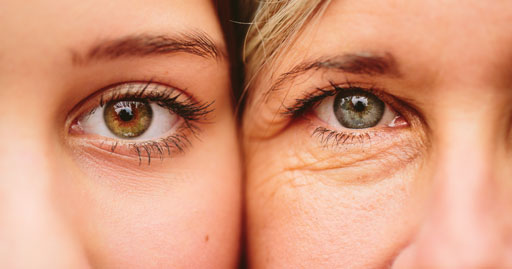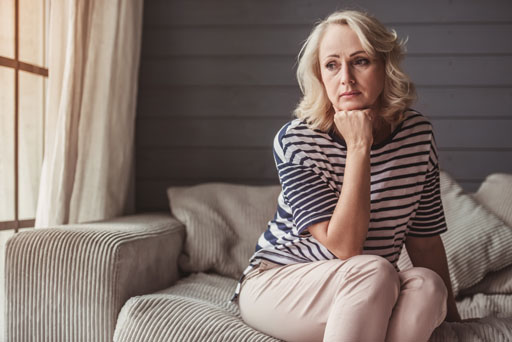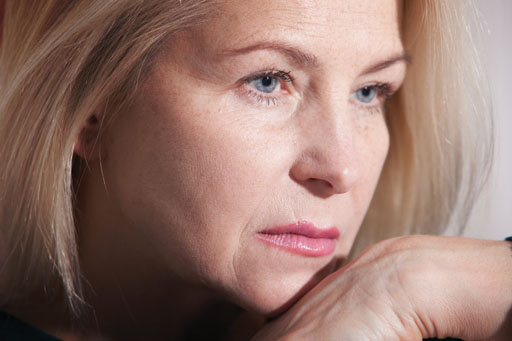OTC

Changing times
In OTC
Bookmark
Record learning outcomes
It’s not just about hot flushes, the perimenopause can present a whole range of symptoms, writes Victoria Goldman.

When women say they’re going through the menopause, they’re actually talking about the perimenopause – the three to five years before a woman’s periods stop for good and for some years afterwards. During the perimenopause, a woman’s oestrogen levels begin to fall. The resulting symptoms can last for up to four years, though one in 10 women experience them for up to 12 years.
The average age of the menopause in the UK is 51, so most women in their mid to late 40s will be perimenopausal. “Not all women have a troublesome perimenopause,” says Norma Goldman, a former pharmacist and director and founder of The Menopause Exchange. “But many do experience noticeable symptoms and, for some, it can be a particularly distressing time of life. The menopause is a common reason why women ask a pharmacist for advice, so pharmacists should be aware of the symptoms and the best way to manage them.”
Symptoms can vary...
Dwindling or fluctuating oestrogen levels affect women in different ways. Most women notice a change in their periods as they get older – these may start to vary in frequency and length. Some female customers may
find they skip a month, then have several periods close together and then skip another month. However, it’s also possible to be in the perimenopause and have regular periods – women may notice more subtle changes, such as a slightly shorter menstrual cycle, or lighter or heavier bleeding.
Around 88% of perimenopausal women experience hot flushes. This is a sudden sensation of heat in their upper body, usually the face, neck or chest. A customer’s skin may become flushed or blotchy, accompanied by sweating and a rapid heart beat. A hot flush only lasts for a few minutes at a time, but can be very uncomfortable and embarrassing. Other common perimenopausal symptoms include vaginal dryness, urinary discomfort, poor short-term memory, low mood and aches and pains.
“When most people think of the menopause, hot flushes come to mind,” says Norma Goldman. “But many women notice a change in their sleep patterns before they experience any hot flushes or night sweats. This can affect their energy levels, concentration and mood and cause fatigue, headaches and muscle tension.”
The perimenopause can affect most parts of a woman’s body, with some symptoms not even being connected with the menopause at the time. Some women may experience bloating and bowel changes, palpitations, sudden or gradual hair loss, changes in their skin and a dry mouth with a burning tongue. Other women may experience fatigue or problems with concentration, which can affect their working life.
“It’s important that women see their GP if they have any symptoms they’re not sure about,” says Goldman. “Other conditions, such as thyroid problems, can mimic symptoms of the menopause. Some symptoms, such as constipation and diarrhoea, aches and pains, can have other causes that need to be diagnosed and treated.”
Pharmacy advice
Women may readily ask pharmacy staff about hot flushes, aches and pains and hair loss, seeing pharmacies as accessible healthcare professionals on the high street. “Women going through the menopause often struggle with symptoms and want to know what’s effective,” says Dr Nuttan Tanna, pharmacist consultant (women’s health & older people), at The Northwick Park Menopause Clinical and Research Unit.
“Community pharmacists have a dedicated counselling area and are experienced in doing MURs, so women can ask for a private consultation. The advantages of visiting a pharmacy, rather than a GP surgery, include quick advice and no appointments. Women are generally comfortable talking to a pharmacist if the consultation is professionally managed in a comfortable environment.”
However, some patients may be more reluctant to discuss more intimate health issues, preferring instead to suffer in silence. “Up to 60% of menopausal women will suffer from vaginal dryness,” says Dr Karen Gardiner, Founder of Purple Orchid, a women’s self-care company. “They are far less likely to ask about that – statistically speaking, only one in four will do so. Yet it’s one of the easiest of all menopause symptoms to solve. If you have vaginal moisturisers sitting beside remedies for hot flushes, the solution is right in front of anyone who is too embarrassed to open the conversation.”
Bladder weakness is another subject that customers may be reluctant to
mention, preferring to choose suitable products discretely instead before taking to the pharmacy conter. “The pelvic floor muscles are quite possibly our body’s biggest unsung heroes,” says Jane Wake, Innovo spokesperson, female fitness professional and pelvic floor expert. “They are shaped like a hammock to hold the pelvic organs – the uterus, bowel, vagina and bladder – in place. In a nutshell, a strong pelvic floor means everything is kept firmly in place and you should have full control over when, where and how often you visit the loo.
“During various times in a woman’s life – including pregnancy, childbirth and menopause – these muscles can be weakened, which can lead to urinary incontinence. This can vary from occasional little leaks to total loss of control.”

Bladder weakness products don’t just mean pads and liners, but also pelvic floor toners and creams to ease any skin irritation too. If women are buying such products, pharmacists could offer advice on pelvic floor exercises, if the customer seems open to these discussions.
“Continence products are growing at a phenomenal rate and many of the people buying them will be menopausal women, so these will benefit from being placed in a dedicated menopause section on the shelves,” says Dr Gardiner. “As wonderful as incontinence pads may be at soaking up fluid and keeping the skin dry, this in itself can cause irritation and inflammation, so it’s useful to place products beside them that address this.”
Making referrals
Dr Tanna says that if a customer is struggling with menopausal symptoms, she should go to her GP for a risk-
benefit assessment for HRT first, before considering alternatives. Not all menopause cases are straightforward. Premature menopause can affect women as young as 35 or may be triggered by surgery or cancer treatments – in these cases, women need professional help. Severe symptoms that are causing distress also need to be referred on. Pharmacists can signpost women to places that provide further advice, help and support such as local menopause clinics and self-help groups.
Dr Tanna says pharmacists should be more wary about offering menopause advice to a woman of 35 than to a woman of 60 (as long as there are no red flag symptoms). “Many women worry about the risk of breast cancer if they take HRT, so community pharmacists should be up to date with the latest guidance,” she says. “There are lots of alternatives available, such as sage, black cohosh, ginseng (for libido problems and a lack of energy) and St John’s Wort (for depression).
“However, community pharmacists need to be trained about when to sell alternative products, as these aren’t suitable for all women – black cohosh, for example, shouldn’t be taken with anti- hypertensives and can cause liver damage. Women who are considered to be ‘high risk’, such as those going through a premature menopause, should be referred to their GP, rather than buy alternative products.”
Women should also look at their overall health at this time of life, dealing with their changing physical and emotional needs. Anxiety often strikes women around the menopause, along with low self-esteem and mood swings. Cognitive behavioural therapy, mindfulness, counselling and hypnosis may be useful.
“The impact of anxiety is often underestimated and many women are reluctant to seek help,” says Norma Goldman of The Menopause Exchange. “Emotional and psychological menopausal symptoms are often the hardest ones to tackle, but there are plenty of things women can do to keep their anxiety from controlling their life.”
The menopause is often seen as a good time of life for women to improve their overall health and wellbeing. Certain foods and lifestyle factors can make hot flushes and night sweat worse. These include caffeine, red wine, smoking, spicy foods, hot drinks, alcohol and stress. Some women find it helpful to increase their intake of soya-based products and other phytoestrogens, or to take phytoestrogen supplements.
Weight gain is common at this time of life, and the risk of chronic conditions, such as heart disease, type-2 diabetes and osteoporosis, increases as women get older. Eating a healthy diet, managing their weight and taking more physical activity can have a positive benefit on women’s long-term health, and may also reduce mood changes, anxiety and depression.

“Research shows that women may lose their motivation to exercise during the menopause due to changes in the reward system in their brain, whilst also battling with symptoms of tiredness, joint aches and lack of sleep,” says Kate Panter, a consultant gynaecologist and British Menopause Society expert.
“We need to get the message out there about the importance for their ongoing health of regular aerobic exercise such as walking and running, in conjunction with resistance training. The menopause should not be a slippery slope to poor health just because this message isn’t getting through.”
